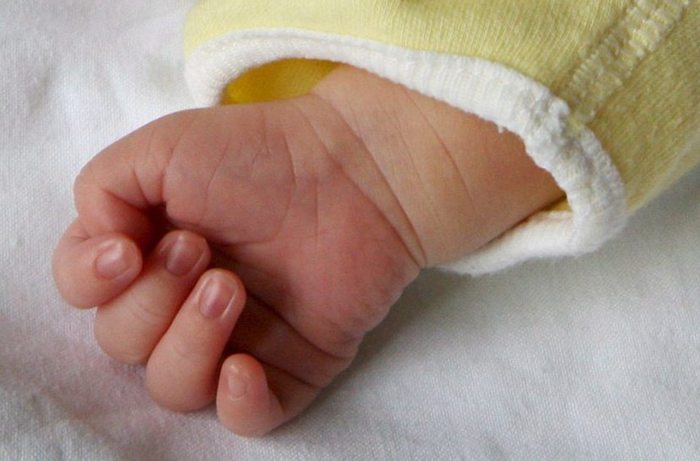Doctors say they constructed a bespoke gene-editing treatment in less than seven months and used it to treat a baby with a deadly metabolic condition.
The rapid-fire attempt to rewrite the child’s DNA marks the first time gene editing has been tailored to treat a single individual, according to a report published in the New England Journal of Medicine.
The patient, Kyle “KJ” Muldoon Jr., was born in August with a rare disorder caused by a misspelling in the gene CPS1, which prevents his body from producing a critical enzyme. Without treatment, the condition typically leads to a dangerous buildup of ammonia in the blood and is often fatal without a liver transplant.
The treatment was developed by a team at the University of Pennsylvania led by gene-editing specialist Kiran Musunuru, using a new version of CRISPR known as base editing, which allows scientists to change a single letter of DNA at a specific site.
“I don’t think I’m exaggerating when I say that this is the future of medicine,” says Musunuru. “My hope is that someday no rare disease patients will die prematurely from misspellings in their genes, because we’ll be able to correct them.”
The project involved more than 45 doctors and scientists, along with pro bono support from several biotech firms. Rebecca Ahrens-Nicklas, a physician at the Children’s Hospital of Philadelphia who treats metabolic diseases in children, led the clinical effort.
“In reality, this drug will probably never be used again,” says Ahrens-Nicklas, who emphasized that the treatment was designed for just one patient.
Researchers began designing the drug after identifying KJ’s mutation shortly after birth. His parents, Nicole and Kyle Muldoon, were approached about the experimental treatment and agreed to proceed. What followed was a race to test the therapy in animals and obtain emergency approval from the U.S. Food and Drug Administration.
KJ received three escalating doses of the drug. Because a liver biopsy would be required to confirm whether the DNA was corrected — and poses too much risk — doctors say they can’t yet confirm the full extent of the gene-editing effect. Still, early signs are promising.
“He’s received three doses of the therapy without any complications, and is showing some early signs of benefit,” she says. “It’s really important to say that it’s still very early, so we will need to continue to watch KJ closely to fully understand the full effects of this therapy.”
Ahrens-Nicklas adds that because the child is “growing and thriving,” she believes the treatment has at least partially succeeded, and that he may now have “a milder form of this horrific disease.”
While new gene-editing tools can theoretically cure thousands of conditions, the ultra-rare nature of many of these diseases makes it difficult to justify the cost of developing treatments for each one.
“Eventually,” Musunuru says, “the cost of custom gene-editing treatments might be similar to that of liver transplants, which is around $800,000, not including lifelong medical care and drugs.”
For now, biotech companies are focusing on more common genetic disorders–such as sickle cell disease–which affect larger patient populations. One-off cases like KJ’s are unlikely to attract investment.
“In reality, this drug was created knowing there would never be a market,” says Musunuru, who notes that efforts are underway at his university and in Europe to standardize the process and lower costs.
The experiment points to a future in which sick children may have their DNA sequenced and receive customized therapies within weeks. At present, this is feasible only for liver-related diseases, but researchers believe that with further progress, similar approaches could be used to treat conditions involving the brain or muscles.
Still, the field faces a fundamental gap between scientific potential and economic reality.
The apparent success in treating KJ, however, is making it even more urgent to figure out a way forward. Researchers acknowledge that they don’t yet know how to scale up personalized treatment, although Musunuru says initial steps to standardize the process are underway at his university and in Europe.












